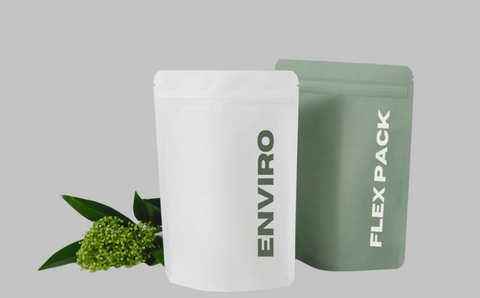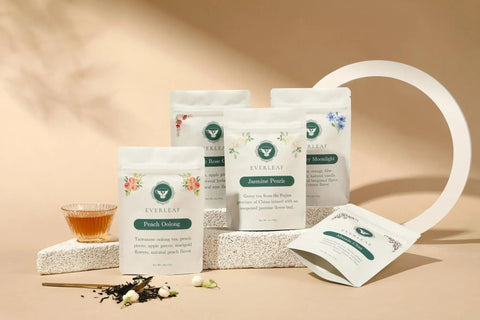How to Choose the Best Sustainable Cracker Packaging
The push for sustainable packaging is no longer a niche concern. For brands in the food industry, particularly in the snack sector, packaging decisions have evolved into larger conversations about environmental responsibility, consumer trust, and long-term business resilience. Crackers, while simple on the surface, pose unique challenges when it comes to packaging. They are delicate, sensitive to moisture, and often meant to be consumed over time. When selecting flexible cracker packaging that aligns with sustainability goals, the decision often comes down to two main options, recyclable or compostable.
Both promise a reduced environmental footprint. Both offer alternatives to conventional mixed plastic films that clog landfills. But each comes with its own infrastructure requirements, material trade-offs, and consumer perception risks. Choosing the right one means understanding the strengths and limitations of each path, especially in the context of food packaging that needs to perform under real-world conditions.
Check out our cracker packaging or get a custom quote today!
Understanding the Materials: What You Are Really Choosing
Recyclable flexible packaging is most commonly made from mono material films such as polyethylene or polypropylene. These structures are designed to be processed through existing recycling streams, provided they meet certain conditions and are labeled properly. Unlike traditional multi-layer pouches that combine plastic, foil, and paper, which are not recyclable in most cases, mono material pouches simplify the recovery process. They do not require separation or complex treatment, which makes them more compatible with curbside recycling systems in cities that accept flexible plastics.
Compostable packaging is made from bio-based materials such as polylactic acid, cellulose, or other renewable polymers. These materials are engineered to break down into organic matter in composting environments. Some options are designed for industrial composting facilities, which maintain the heat and microbial activity needed for full decomposition. A smaller number of compostable films are certified for home composting, though these tend to take longer to break down and require specific moisture and oxygen conditions.
Both types of packaging can look and feel similar, but their entire life cycles differ. From material sourcing to end-of-life treatment, recyclable and compostable films each represent different philosophies in packaging design.
Barrier Needs, Keeping Crackers Protected
Crackers are vulnerable to moisture, air, and crushing. A successful package must prevent water vapor and oxygen from compromising the texture and taste. That means barrier protection is not optional, it is a critical part of preserving product quality and shelf life.
Recyclable mono materials have made significant strides in this area. Today’s high barrier polyethylene films can incorporate metallized layers, coatings, and specialized seals that help them rival the performance of traditional laminated pouches. These materials are also compatible with resealable features like zippers, which are important for portion control and freshness after opening. For cracker brands that need several months of shelf stability and plan to distribute through national retail channels, these options often strike the right balance between sustainability and function.
Compostable materials tend to have weaker barrier performance. While they are improving, many are still less resistant to moisture and oxygen compared to their petroleum-based counterparts. This makes them better suited to products with short shelf lives, or brands that prioritize small batch, local distribution. If a cracker product is sold at farmers markets or specialty stores with quick turnover and attentive handling, a compostable pouch may be sufficient. But if the crackers are going to sit in a warehouse or be shipped across the country, the risks become more pronounced.
Disposal Realities, From Consumer to Compost or Bin
One of the biggest disconnects in sustainable packaging lies in the end user’s role. Just because a pouch is labeled recyclable or compostable does not mean it will be disposed of correctly. This is where design meets behavior, and sometimes fails.
Recyclable pouches, even when designed properly, often face poor recovery rates because consumers either do not understand how to dispose of them or live in areas where flexible plastics are not accepted. While rigid plastics have more established recycling pathways, films and flexible formats still lag behind. Even when labeled with How2Recycle information, the journey from bin to processing center is not always smooth.
Compostable packaging faces a different problem. It sounds ideal, but its success depends entirely on infrastructure. Most industrial composting facilities are located near major urban centers and are not accessible to the average household. Even fewer consumers have the means or knowledge to compost at home. Worse still, compostable pouches that end up in the recycling stream can contaminate it, making entire batches of recycled material unusable. That well-intentioned act of tossing compostables into the wrong bin can have unintended consequences.
For cracker brands that want to build trust with environmentally conscious consumers, the best strategy is not just to choose a sustainable material, but to ensure the disposal path is realistic. Clear labeling, education, and matching the material to the market are key.
Branding and Consumer Perception
Sustainability is no longer a fringe concern. Increasingly, it is an expectation. Consumers want to see packaging that aligns with the values of the product inside. This is especially true in natural foods, organic snacks, and artisanal products. Crackers positioned as healthy or locally made are often assumed to be packaged in an environmentally friendly way.
Compostable packaging carries strong emotional appeal. It signals purity, commitment to zero waste, and a rejection of traditional plastic. Brands that use compostable pouches often emphasize their use of organic ingredients, clean labels, and minimal processing. This makes sense for audiences who are already invested in sustainable living and are willing to go the extra step to dispose of packaging responsibly.
Recyclable packaging offers a more pragmatic option. It may lack the storytelling power of compostables, but it works well for a broader audience. For brands aiming to grow into larger retail chains or reach customers who value convenience, recyclable films offer a responsible compromise. They allow for high performance packaging without straying too far from what the average consumer understands.
The key is consistency. Your packaging must reinforce the values your brand projects. If you claim to be eco friendly but your packaging ends up in a landfill because it is not truly recyclable or compostable, you risk losing credibility.
The Decision, What Should Cracker Brands Choose
If your crackers are distributed regionally, have a short shelf life, and target a niche audience that actively seeks out sustainable products, compostable packaging could be a powerful brand asset. It works best when paired with strong messaging and local composting partnerships.
If your crackers are sold nationally, need a longer shelf life, or are placed in retail environments where you cannot control disposal, recyclable packaging is likely the better fit. With the right film structure and clear labeling, you can achieve sustainability without compromising product performance.
Ultimately, choosing between recyclable and compostable flexible packaging is about understanding your customer, your product, and your supply chain. There is no universally correct answer. The best decision is the one that aligns with your values, your business model, and the real-world behavior of the people buying your crackers.








Comments (0)
There are no comments for this article. Be the first one to leave a message!